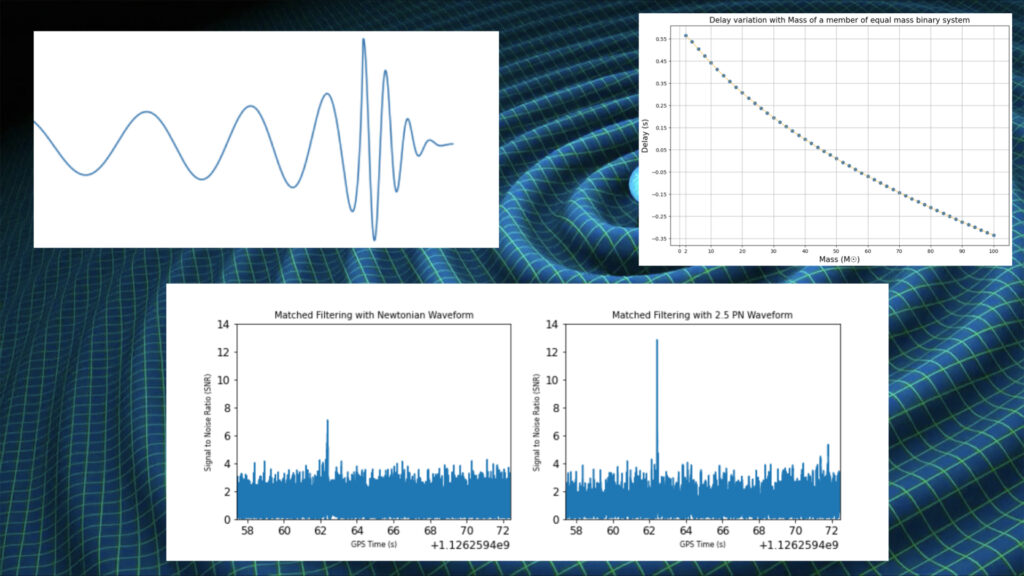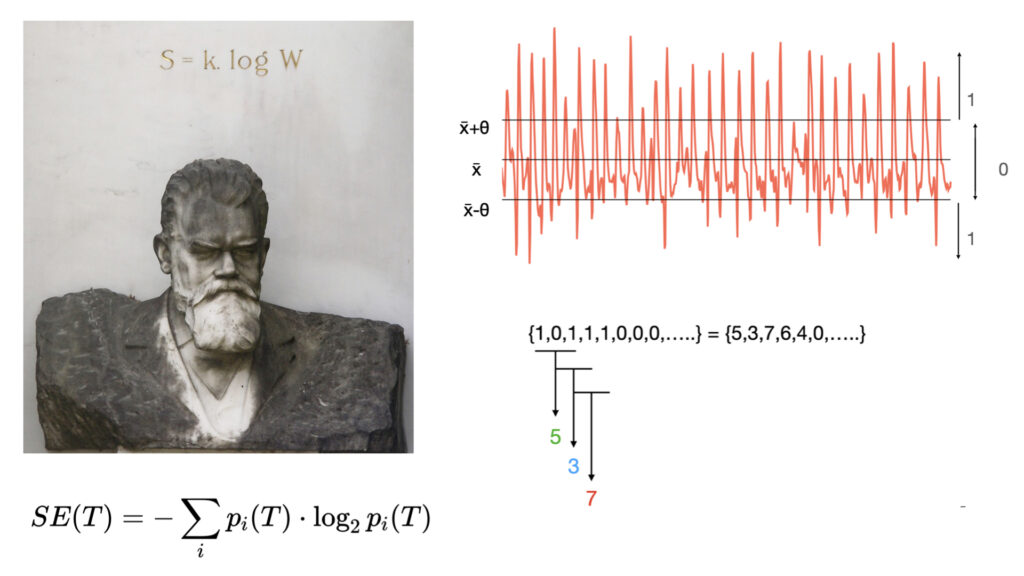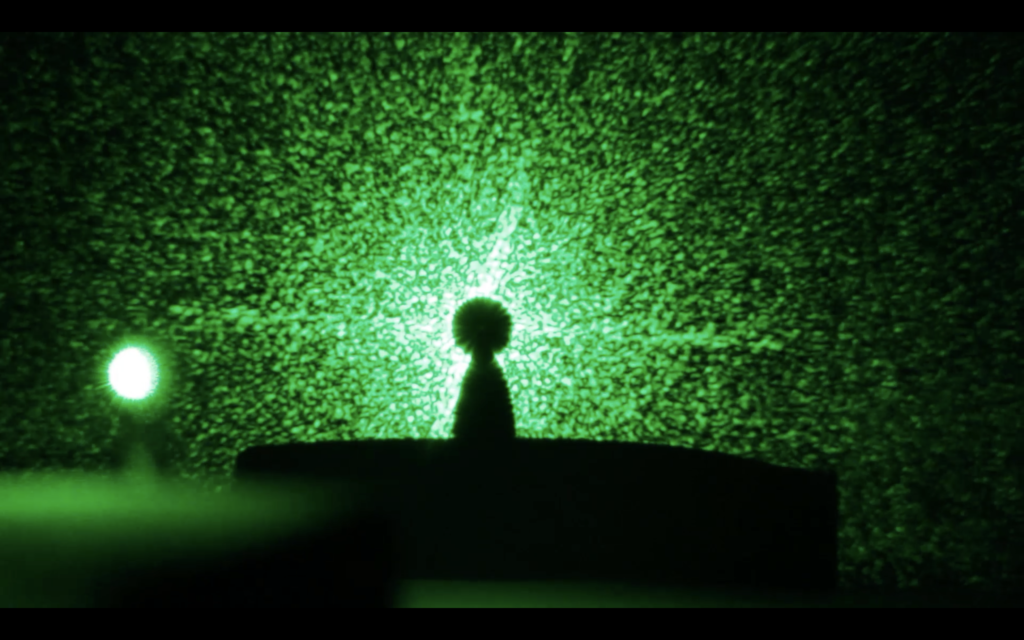“Somewhere something incredible is waiting to be known.”
Carl Sagan
Generating Gravitational Waveforms using Post Newtonian terms
Summer Project – K.S.P. 3.0, IIT Bombay (2022)
- Gravitational Waves are ripples in spacetime, which were first predicted by Albert Einstein in 1916 using the General Theory of Relativity and observed experimentally in 2015 by the Laser Interferometer Gravitational wave Observatory (LIGO).
- The modeling of gravitational wave signals detected by LIGO requires solving the Einstein Field Equations to theoretically generate the gravitational waveforms. However, due to their highly non-linear and complicated nature we use certain approximation methods.
- In this project, we employed the Quadrupole Approximation and Post Newtonian Expansions to generate gravitational waveforms of Compact Binary Coalescence (CBC) for varying source parameters.
- Matched Filtering of the GW150914 strain data was done with the generated waveforms as templates. A higher Signal to Noise Ratio (SNR) was obtained for the PN Waveform compared to the Newtonian waveform, which suggests its effectiveness in finding gravitational wave signals.
- A delay in the coalescence time was observed for Post Newtonian (PN) Waveform as compared to the Newtonian waveform because of the PN correction terms. The delay was found to vary with the masses of the binary components and choice of initial gravitational wave frequency.
Entropy as a measure for Signal Processing
.
Master’s Project (2022)
- Entropy is one of the basic quantities in Physics. It can be defined based on an approach either of Classical Thermodynamics or Statistical Mechanics. The Statistical definition has an analogue in Information Theory named Shannon Entropy (SE) which is more general.
- Symbolising/discretising signals into a set of characters or words the SE is calculated for that signal/time series. A modified version of SE was introduced based on purpose. The quantity can be used to distinguish two signals symbolised based on some parameters of analysis.
- The method was verified on EEG data and applied on ECG data of Normal and Congested Heart Failure Patients to produce useful results with choice of different parameter values.
Useful things from Courseworks
- Euler’s Method Problems ( Jupyter notebooks at GitHub )
- Metropolis Algorithm for a 2D Ising Model ( GitHub )
- Solutions to the programming problems from the Coursera course Data-driven Astronomy ( GitHub )
- Seminar presentations from Bachelor’s | Cepheid_Variables | Standard_Big_Bang_Model



